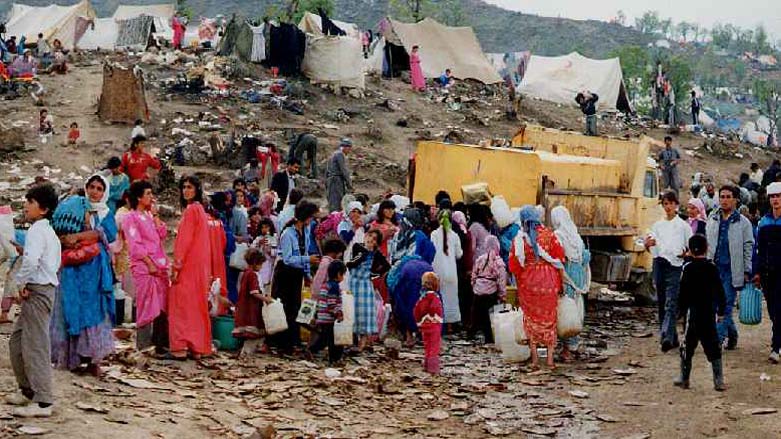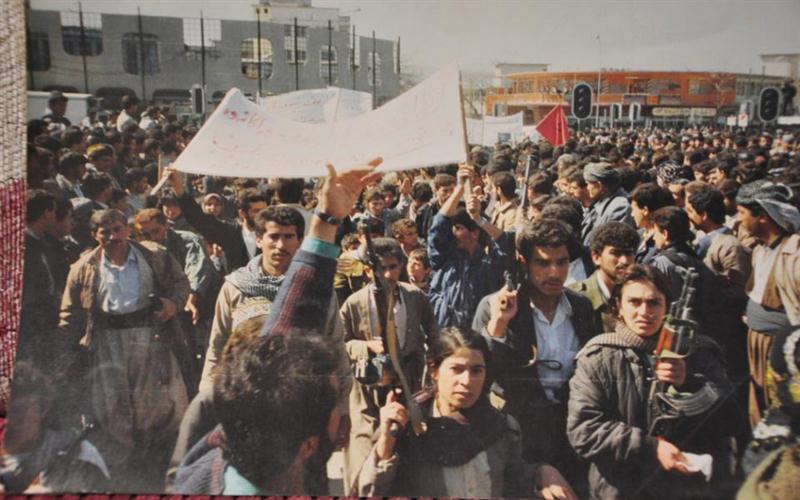The Kurdish Uprising, Part I: 25th Anniversary
.jpg)
Read the previous reports in the series: Road to Independence and Pulling Punches and 'Surrender' at Safwan: 25th Anniversary
Twenty-five years ago, virtually all of Iraqi Kurdistan rose up against Saddam Hussein’s brutal regime. The rough outlines of this Kurdish spring are well-known, particularly to those who lived them. This account is based on 80 interviews conducted in the Kurdistan Region in the summer of 1993 by this author in partnership with a friend and colleague, Kamran Karadaghi, then a journalist with al-Hayat. Twelve years later, Karadaghi would become Chief of Staff and official spokesman for Iraq’s first Kurdish president, Jalal Talabani.
In 1993, we interviewed Masoud Barzani, Jalal Talabani, and other senior figures in the KDP and PUK, as well as individuals with no title or party affiliation. The interviews were meant for a book that was never written. Now they offer forgotten details about key aspects of the early years of this quarter-century of Kurdish self-rule, including the 1991 uprising, with which it began.
There is a largely untold story of the planning undertaken by the KDP and PUK, separately and jointly, for the uprising. To be sure, the revolt was, above all, the Kurdish people’s own doing, but it was assisted through the work of the two parties. As one Kurdish leader put it, “In many places, the uprising was spontaneous, but we had in place people to control things” and prevent such harmful activities as looting and the destruction of vital installations. In the big cities, the Peshmerga often provided crucial military support.
This planning, and the uprising itself, took place against the backdrop of Saddam’s genocidal Anfal campaign just three years before. It had left the Kurdish countryside decimated through the repeated use of chemical weapons, most notoriously at Halabja; the destruction of 90 percent of Kurdish villages; and the transfer of the rural population to settlements to facilitate the regime’s ability to exercise control.
In preparing for the uprising, one senior figure stressed the importance of the growing unity among the Kurdish parties, beginning with a 1986 agreement between the KDP and PUK. That led to the founding of the Kurdistan Front two years later, shortly before the August 1988 ceasefire to Iraq’s war with Iran, when Saddam directed his military forces toward the redoubled repression of the Kurds.
The Kurdish leadership had keen insights into Saddam. After their 1988 defeat, Barzani encouraged his party, saying, “You shouldn’t lose hope. There will be a time to renew our struggle. Since we have Saddam Hussein, there never will be stability in the region.”
As Barzani told us in 1993, already in July 1989, he had cautioned a London audience that Saddam might well attack Kuwait.
Seven months later, in February 1990, Saddam publicly threatened Israel, while privately demanding that Saudi Arabia and the Gulf states provide Iraq an additional $30 billion.
The Kurdish leadership understood the significance of that demand and its implications, because they operated on a correct understanding of Saddam’s intentions and the strategic picture more generally.
By contrast, the US was somewhat myopic, concentrating on the Arab-Israeli “peace process.” It was fixed on prodding Yasir Arafat to formally renounce terrorism, so it could push Jerusalem into negotiations with the PLO (Arafat would support Saddam, after he invaded Kuwait!).
Following Saddam’s threats, the Kurdish leadership began to focus on planning options: the agarichan, the “ifs.” If Saddam does this, how will we respond? If Saddam does that, what will we do?
The Kurdistan Front met at PUK headquarters on the Iran-Iraq border. A major focus of the meeting was “What should we do, if Saddam invades Kuwait?”
A committee was established to think through systematically the scenarios such an eventuality might precipitate. The hoped-for outcome was a popular uprising. Two senior figures, one each from the KDP and PUK, began to contact people inside Kurdistan. They sought to test their mood and readiness to respond to calls for action. From the start, the attitude of the Kurdistan Front was “national reconciliation”: even those who had collaborated with Saddam’s regime were to be included, “because we are all Kurds.”
A second step was to coordinate with Iraq’s Arab opposition parties, because the uprising would be more effective, if it were nation-wide. Also, adding an Arab dimension would blunt others’ concerns about Kurdish separatism and, hopefully, mute their opposition.
The Tehran-based Shiite Supreme Council for the Islamic Revolution in Iraq (SCIRI) was the Kurds’ main interlocutor. But the contacts were not very useful, because of SCIRI’s limited organizational capabilities and its dependence on Iran. As one senior Kurdish figure who dealt extensively with SCIRI observed, “When the uprising started, the Kurdish leadership all entered Iraq, but very few of the Islamic leadership did.”
After Saddam invaded Kuwait, the Kurdistan Front began sending small units into Iraq. They brought letters to the Mustashars (tribal chiefs), as well as radio equipment for cells inside the cities, and they established codes for communications. By the time, the US-led war against Iraq began in January 1991, the Kurdistan Front had assigned individuals to administer every Kurdish town and city.
This was focused, comprehensive planning, conducted by dedicated men for whom success would constitute a remarkable turn of fortune and failure would be an unthinkable calamity. As it turned out, many things went as planned, even as many others did not. For one thing, the uprising began without them—five days ahead of their own March 10 “D-Day.” And it is to the uprising itself that we will turn in the next piece in this K24 anniversary series.Laurie Ann Mylroie, Ph.D., taught at Harvard University and the US Naval War College. Most recently, she served as a cultural advisor to the US military in Afghanistan.
Editing by Delovan Barwari and Karzan Sulaivany



